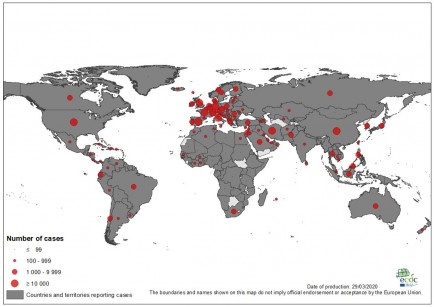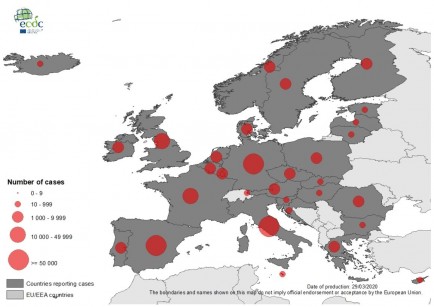Travel has a lot of benefits. It breaks up our routine, makes us more physically active, and encourages us to try new things. In fact, a 2014 study found that experiences such as traveling make us happier than just buying stuff.
The downside? Carbon emissions related to tourism have been on the rise in the past few years, and scientists suggest the industry is responsible for up to 8% of the world’s total carbon emissions. Fortunately, that’s something we can change.
“Sustainability starts with breaking down our assumptions about what day-to-day life has to look like, even on vacation.” says travel and outdoor writer Meghan O’Dea. “A beautiful landscape doesn’t always equate to an eco-friendly destination.”
Why travel is so carbon-heavy
There are some obvious culprits to blame for travel’s carbon load: jet fuel, the gas burned on a road trip, and the energy hotels use to keep the lights on and the rooms cool. But there are more subtle ones, too. For example, hotels catering to tourists may have to import food instead of sticking to local sources, and the development of resorts and other tourist traps may reduce forest cover or otherwise negatively affect the land. And on islands, which have limited natural resources, that means more shipping and more strain on their ecosystems.
The tourism industry has started to address this issue, not least because climate change is a direct threat to the white sand beaches that draw tourists in the first place. So they’re acting to address the problem by limiting emissions, offering sustainable ways to eat and get around. But you can help keep emissions to a minimum, too.
Choose the right place
It starts with your destination. The most sustainable places to visit are ones with the resources to handle large amounts of people—such as cities—or that are set up to drive tourists towards the local communities that most need their dollars. If you’d like help figuring out where to go, O’Dea recommends Yale’s Environmental Performance Index, which ranks countries on their green approach to everything, including tourism, and will tell you how sustainable it is overall.
When considering where to rest your head, look for places that set aside the “traditional” hotel experience. Many hostels are quite sustainable, for example, because they don’t change linens daily, and allow you to prepare your own food, O’Dea says.
But don’t take logos and seals of approval at face value. Look up hotels and resorts through independent authorities such as Leadership in Energy and Environmental Development (LEED) to maintain the local environment and limit negative impact. Costa Rica, for example, runs a green tourism program that looks at the effects tourist facilities and companies have on natural and cultural resources, local communities’ quality of life, and the country’s economic development.
Get there the green way
From a carbon production perspective, aviation is the most costly way to get around. One mile in the air will generate 53 pounds of carbon dioxide, while cars cough up nearly a pound per mile. Consider trains, buses, or renting a hybrid or electric vehicle to get where you’re going. Even fully charging an electric caron a coal power grid is still better, emissions-wise, than driving a gas-powered one or getting on a plane.
Of course, flying is sometimes your only option. If that’s the case, and you want to stay as green as possible, you’ll need to embrace some of the worst parts of air travel. Airlines quite literally spend tens of thousands of dollars at the pump for every flight, so fuel efficiency is important. For you, this means investing a little more in layover-free flights so the plane can cruise at altitude, but also narrower seats and fees for any extra baggage weight. So, if you have to fly, lean into touching hips with a stranger and bring the lightest bag possible—it’s better for the planet.
The lighter, the better
No matter what mode of transportation you’re taking, look at what’s in your luggage. “Fewer Emissions” is the name of the game, and there’s only one rule: pack as lightly as you can. Omit the things you can rent or borrow when you get there, like mountain bikes or other sports equipment. If possible, leave behind any power-hogging gear, like your laptop, and use your smartphone to snap photos instead of hauling a camera with you.
When it comes to clothes, ask the resort or hotel about laundry options and forget about packing a different t-shirt for each day you’ll be there. If possible, bring only natural fibers, as synthetics can shed microplastics into the local environment.
Green gear you shouldn’t leave behind
Bringing reusable stuff with you can limit how much waste you generate. A water bottle is essential, since governments have started asking tourists to stop buying bottled water because of its environmental cost. Solar chargers for the gear you do bring will limit your impact on the local power grid. Consider packing reusable bags, straws, napkins, and utensils as well. And instead of buying a paperback at the airport, bring an e-reader, or ask if the resort or hotel has a library on-site and read from there.
Get around responsibly
Once at your destination, the next challenge is getting around. Keep in mind that everyone has a different level of mobility, so if you’re traveling with a group, discuss available options before dragging everyone to the bike rental kiosk.
Start with public transit, which offers the most bang for your ecological buck when it comes to getting around and your tourism dollars help support the network for locals. Plus, it is one of the best ways to explore a city.
If there are no buses or trains available, or you just feel like enjoying the fine weather, consider a bike. Cycling is the most sustainable option for short and medium-length one-person trips. Remember to ask for information about bike lanes and local cycling regulations at your hotel, resort, or bike rental, and definitely don’t forget your helmet.
And, of course, for short trips, walking is free. One other point to keep in mind: if you cycle and walk everywhere, you won’t have to worry about missing the gym.
Eat (and buy) local
As a rule of thumb, the closer a food source is to your table, the better it is for the environment and the better it tastes. So if you’re overseas and the hotel you’re in is selling some of your favorite snacks from home, remember they probably had to travel a long way to get there, too.
Before you head out, do a little research into what the locals eat and why. This will help you know what local food to order if it’s not on the menu, and handle any dietary restrictions. For example, in the Middle East, the most sustainable and steady food supply consists of sheep and goats that have evolved to handle the arid conditions, so visitors can expect the local diet to be heavier on dairy and meat than they may be used to.
So ditch the imported Wagyu beef and ask for locally sourced and sustainable options at hotels. Look for restaurants that specialize in farm-to-table and sustainable cuisine. And try smaller local places, which tend to get their ingredients nearby out of necessity.
If all of this sounds a little overwhelming, just keep in mind it mostly comes down to planning ahead. Thinking through your trip ahead of time will also show you what life is like in the place you’re going, giving you a chance to learn a bit more about the places you visit.
Original article: https://www.popsci.com/green-travel-eco-tourism/




























Comments